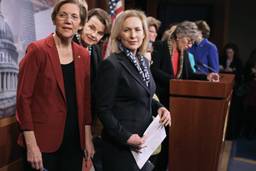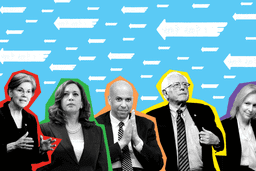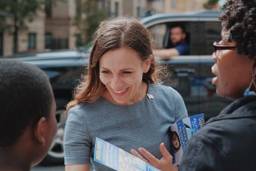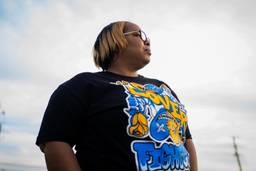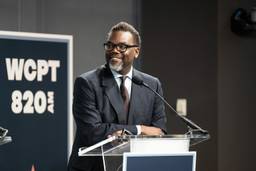Using Elections to Rage Against—And Reform—the Democratic Machine
The authors of a new book talk about how progressives can win elections in the 21st century.
Theo Anderson
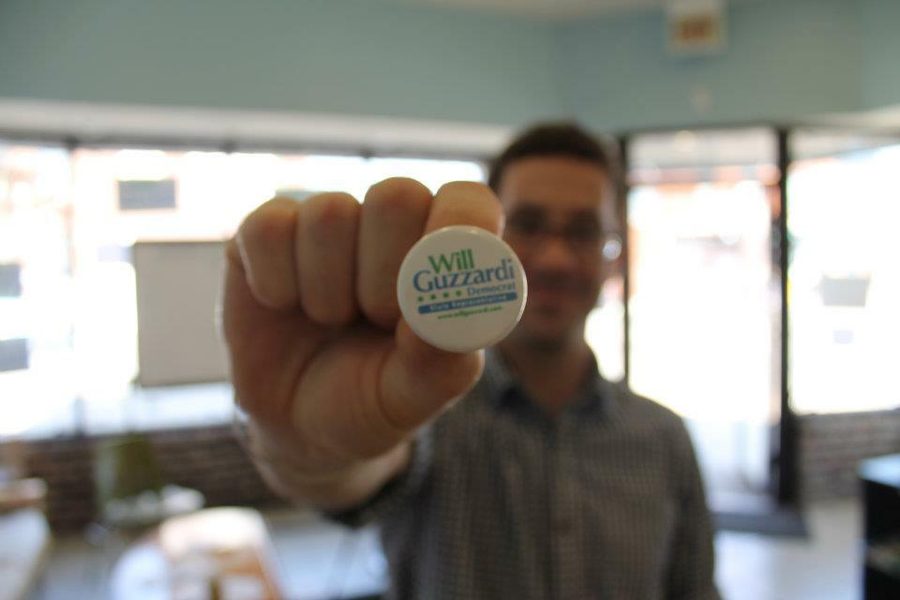
“Our book has a particular point of view,” Dick Simpson said at a recent talk about Winning Elections in the 21st Century, his recently published guidebook for small-scale campaigns. “Many political campaigns are won because they had the most money. We’re looking to (help) a campaign with a modest amount of money — but a real commitment of people.”
Simpson has plenty of experience with grassroots campaigns. He ran for alderman of Chicago’s 44th Ward in 1971 against Mayor Richard J. Daley’s Democratic machine, winning that election and serving two terms as a progressive voice for participatory democracy. He ran for Congress in 1992 and 1994, losing both primaries to a quintessential machine politician, Democrat Dan Rostenkowski, who later served a prison sentence for fraud and was pardoned by Bill Clinton.
Simpson is a professor of political science at the University of Illinois-Chicago (UIC). His co-author, Betty O’Shaughnessy, is a visiting lecturer in political science at UIC.
Winning Elections in the 21st Century includes a case study of the Democratic primary campaigns mounted by progressive Will Guzzardi, who narrowly lost his bid to run for the Illinois General Assembly in 2012. Guzzardi beat the same opponent in 2014, at the age of 26, with a campaign that depended heavily on volunteers. Guzzardi now represents the 39th District in the Illinois House of Representatives.
“We wanted to show how this guy who’s running against an established candidate did everything he needed to do,” O’Shaughnessy said. “We wanted to make people understand that this can be done. This happens.”
Simpson and O’Shaughnessy have also worked together as part of a coalition that successfully advocated for making civics education a requirement for Illinois high school students. The new law, which took effect this year, requires that civics courses include “the discussion of current and controversial issues, service learning, and simulations of the democratic process” — content that is, as the Chicago Tribune noted, “far more provocative than memorizing the three branches of government or the Bill of Rights.”
“This is extremely important,” O’Shaughnessy said. “Young people are very idealistic, and if they understand enough about how all of this works, they’ll want to get involved.”
Simpson and O’Shaughnessy recently spoke with In These Times about the current political climate, the election of 1968 and the importance of teaching civic engagement. Here is what they said.
What has changed and remained the same in political campaigning over the decades?
Simpson: The same techniques that worked for Abraham Lincoln still work. It’s still the same process of getting the message out, having a clear message, getting media coverage, getting your supporters to the polls. What’s changed so drastically is the way we get the message out, and how targeted it is. Now we have voter analytics that tell us how to better appeal to the voter, and we have social media to deliver that message, in addition to all the other techniques we had. And in the book we try to assess whether this is good or bad for democracy. And the answer is: There are some aspects that are good and some aspects that are a danger and could undermine democracy, particularly the analytics and the social media part of it.
Undermine it?
Simpson: Yes, could destroy it. In other words, through micro-targeting we might interest you in getting more involved in this election. We can very narrowly cast the message. But then there’s no broad agreement on what it is that we’re trying to do. And with social media, it’s easy to lie. The persona of the candidate can be really manipulated. Whereas, before, communities would know they had two candidates, and everyone knew something about the candidates, and you had a much better sense of the “who” that you were electing. Now you can have a completely fake candidate.
O’Shaughnessy: And I think that’s one of the strengths of having people come up through the grassroots, and building from there. Because people will know who they are.
There have been comparisons between this year and 1968 — the growing tensions and widening split between the Democratic establishment and the Left. Do you think that comparison holds water?
Simpson: I do. I was the state campaign manager for Eugene McCarthy (the senator from Minnesota who lost the Democratic nomination to Hubert Humphrey in 1968). And there were two lessons out of that. In most cases, the McCarthy/Kennedy/McGovern people (who were to the left of the Democratic Party) did not go back and take control of city councils and state legislatures. After their candidate lost, they folded their tent and went away. And the second thing is, the McCarthy people in particular wouldn’t vote for Humphrey, and so we ended up with Richard Nixon. And so the fear is that we would repeat the mistake of ‘68 and elect Donald Trump, and that would cascade into many other bad effects.
O’Shaughnessy: We both remember the 1968 convention and how Richard J. Daley clamped down, and how people got beaten up and shut down. And at this (recent Democratic) convention, people were allowed to yell and scream all they wanted. It was contained, but it was allowed.
Do you see grassroots energy from the Bernie Sanders campaign filtering down to the local levels?
Simpson: That’s one of the reasons we wrote the book. We didn’t know when we wrote it that it would be the Sanders campaign, but we wrote it to help the 2016 campaigns. We’re trying to show people how to take this energy and translate it into winning elections at all levels. That happened a little bit with Howard Dean and the creation of Democracy for America. The Sanders effort and the creation of Our Revolution looks more hopeful. We really need to have a program to build the team — the A leagues and the B leagues — if we’re ever going to get to the majors. That is certainly doable. But it’s not clear yet whether the Sanders people will win enough out of this election to show it’s worthwhile. Will they have the stick-to-itiveness?
In Chicago, unlike most places in the country after 1968, we created the Independent Precinct Organization (as a challenge to the Democratic machine), and we permanently changed Chicago history. There had never been an independent elected on the north side of Chicago. But after we created the IPO, we elected more than 20 major public officials. So we had a profound effect, in a limited way, in Chicago and Illinois. Most of the country did not have that after 1968. Most of the energy withered. And I don’t know yet whether the Sanders campaign will have that effect. There has to be training of a whole generation. Assuming that they have the right values and care about democracy and justice — if they get all that right, then what we tell them is about the grueling business of winning enough campaigns to make a difference.
Why has the GOP done so much better at the state level than Democrats over the last few elections?
Simpson: In many ways the Democratic Party has been pretty worn out, both in not having motivating issues and in having tired old machinery. They were still doing things the old ways, and Republicans came along with populist appeals, particularly the Tea Party branch. Plus, they had big money. And the Democrats just fell behind. So they have to be revitalized. There’s some indication that that’s happening.
O’Shaughnessy: Another thing that happens is that some of the big money is used to have a uniform strategy all the way down the line. Let’s have voter registration laws, for instance. And they get those passed and signed in states where there are Republican governors. The Democrats are a hodgepodge.
Why is teaching civic engagement so important in high schools?
O’Shaughnessy: Those of us who’ve been involved with this for some time know that teaching civics is like watching paint dry. But teaching civic engagement sets these kids on fire, on the college level and the high school level. If they believe they have a stake in this — by working in a political campaign, for example — they will want to be involved. And they won’t think of it as some boring thing their grandparents did.
Simpson: It’s service learning on steroids. It’s not just offering a cup of soup. It’s asking, “Why are there homeless people?”

